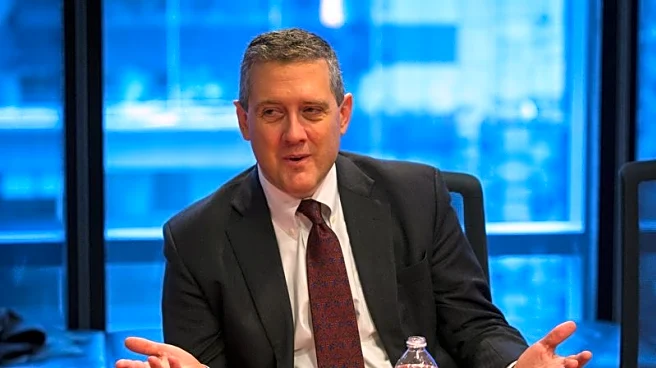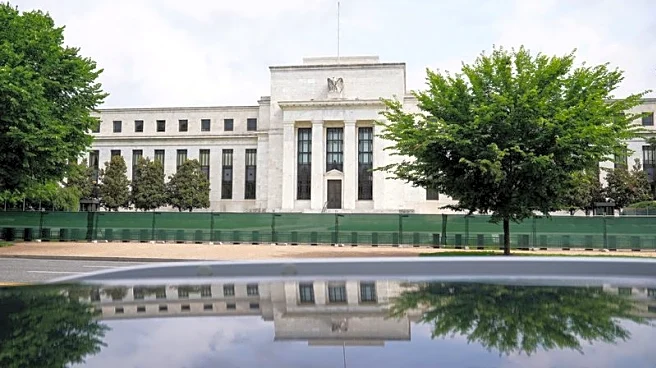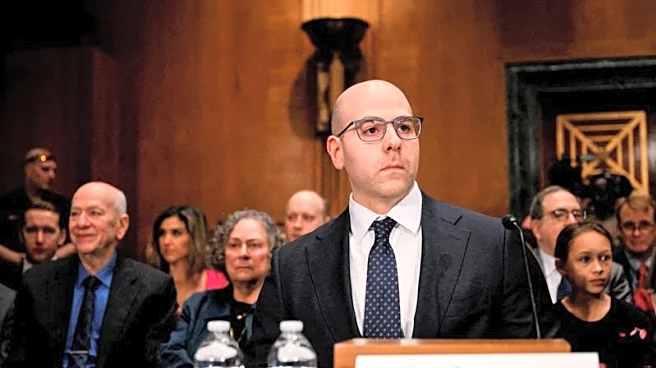What is the story about?
What's Happening?
The Federal Reserve has announced a quarter-point reduction in interest rates, setting the new target range for the federal funds rate at 4.00%-4.25%. This decision, made by an 11-to-1 vote within the Federal Open Market Committee, reflects growing concerns over the U.S. labor market. The rate cut is the first since December 2024 and comes amid President Trump's calls for more aggressive rate reductions. The Fed's decision is part of a broader strategy to manage economic risks, with two additional cuts anticipated before the end of the year. Governor Stephen Miran was the sole dissenter, advocating for a more substantial half-point cut. The Fed's statement highlighted a slowdown in job growth and persistent inflation, which complicates its dual mandate of stable prices and full employment.
Why It's Important?
The Federal Reserve's decision to cut interest rates is significant as it addresses the dual challenges of a slowing labor market and rising inflation. This move is expected to influence borrowing costs, potentially stimulating economic activity by making loans cheaper for consumers and businesses. However, the decision also reflects the Fed's cautious approach to economic management, balancing the need to support employment with the risk of exacerbating inflation. The rate cut could have wide-ranging implications for various sectors, including housing and government debt financing, which President Trump has highlighted as areas needing support. The Fed's actions may also impact financial markets, as evidenced by mixed reactions in stock and treasury markets following the announcement.
What's Next?
Looking ahead, the Federal Reserve plans to implement two more rate cuts by the end of the year, with potential reductions in October and December. This trajectory suggests a continued focus on mitigating economic risks, particularly those related to employment. The Fed's future decisions will likely be influenced by economic data, including inflation and job market trends. Political dynamics may also play a role, given President Trump's pressure for lower rates and the recent appointment of Governor Miran, who supports more aggressive cuts. The Fed's ability to maintain its independence amid political pressures will be closely watched, as will its impact on economic stability.
Beyond the Headlines
The Federal Reserve's rate cut decision underscores the complex interplay between economic policy and political influence. President Trump's vocal criticism of the Fed and his push for lower rates highlight the challenges of maintaining central bank independence. The appointment of Governor Miran, perceived as a Trump loyalist, raises questions about the Fed's decision-making process and its susceptibility to political pressures. This development may have long-term implications for the Fed's credibility and its ability to effectively manage economic policy without external interference.
AI Generated Content
Do you find this article useful?














